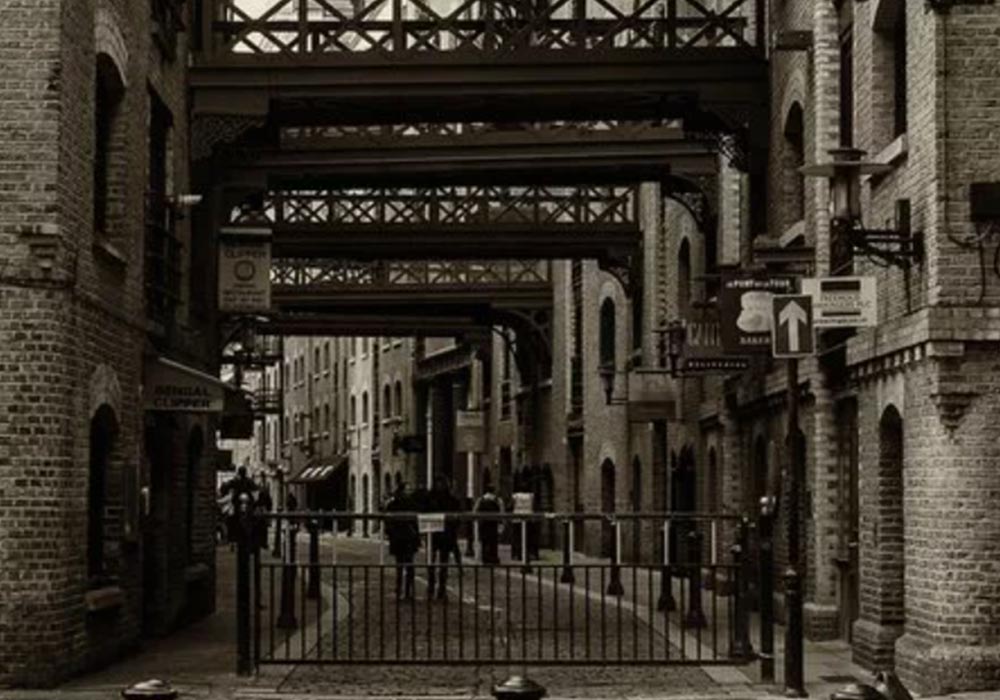Larder of London

In 1873, the warehouses lining the cobbled walkway of Shad Thames were completed, marking a pivotal moment in the area’s history. These warehouses stored exotic spices and essential produce from around the globe, including coffee, tea, sugar, fruits, and herbs, earning Shad Thames the nickname “The Larder of London.”
Contemporary accounts highlight the extensive granaries surrounding the area, which supplied much of London. The iconic iron bridges, which are still visible today, connected the warehouses allowing workers to efficiently roll barrels between buildings without descending to the street.
Unfortunately, this bustling trade didn’t last. By 1972, the last warehouses closed due to changing global trade patterns and river congestion, pushing operations further east.
Today, Shad Thames’s rich trading history is still visible. As you walk through the area, you can see the iron bridges overhead and streets named after the goods that once flowed here, such as Wheat Wharf, Tea Trade Wharf, and Cayenne Court.
Image credit: https://citydays.com/places/shad-thames/
